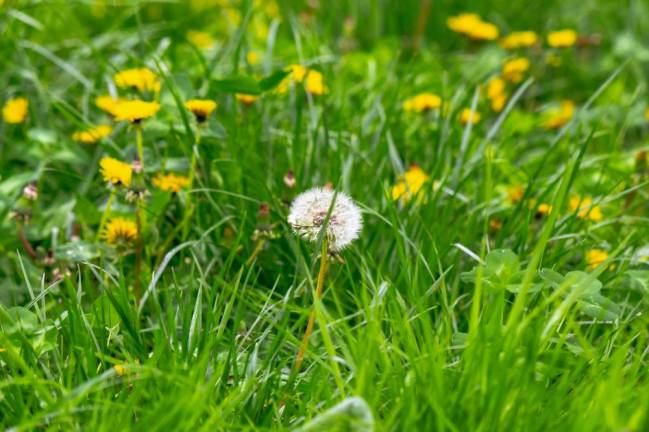Finding a better backyard balance

A group of us in the neighborhood are talking about doing something simple, and unusual, in the month of May. For years I’ve been urging you to visit places in our region where you can encounter interesting, odd bits of the natural world. How short-sighted! You need go no further than your own yard. Even small changes in yard care, particularly lawns, have a serious impact on the health of orchards in the Hudson Valley.
Although we seem to “own” our yard, we are really sharing it with the thousands of beings that live out their lives there and those just passing through. These plants, microorganism, animals, birds and insects remind us that we are part of a web of all living beings. May is the time when pollinators develop, work and then die. Recent years have seen fewer bees. We can help.
Start simply. Allow your lawn to grow naturally for a single month. No mowing, spraying, blowing in May. Just let it be. Lots more flowering plants will get to grow and bloom in the lawn, offering enough nectar for 10 times the number of bees and other short-lived pollinators than a regularly cut lawn does. Ten times!
This is a chance to be a little less zipped up, a side-benefit for those of us who’ve tipped a little OCD during Covid. Our neater yards have come at a hidden cost. Stuck at home, we have mown, sprayed, leaf-blown so much that the rich biodiversity of the plant and insect life has suffered.
“Won’t the neighbors call us lazy and derelict?” That’s why we are trying it with neighbors and putting up positive signs about what we’re up to: “Creating a Pollinator Habitat” or “We Feed Bees.” Remember, it’s just for a month (though if you really get into it, there’s a whole Wild Lawn movement out there.)
No Mow May yard signs are available at cost at the Warwick Community Center along with a free chart to help ID those surprise plants, flowers and bees that show up. For more, search for “Bee City” or “Wild Pollinators.”